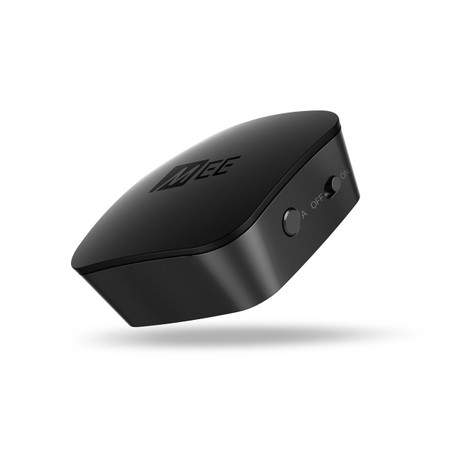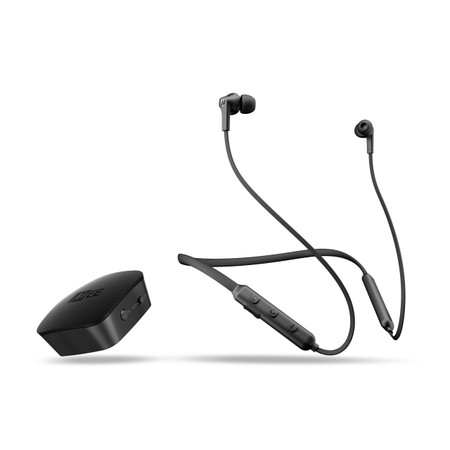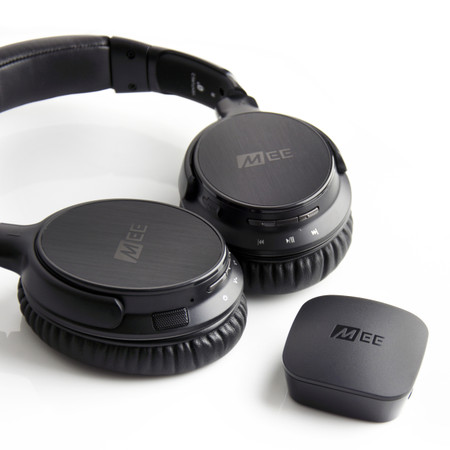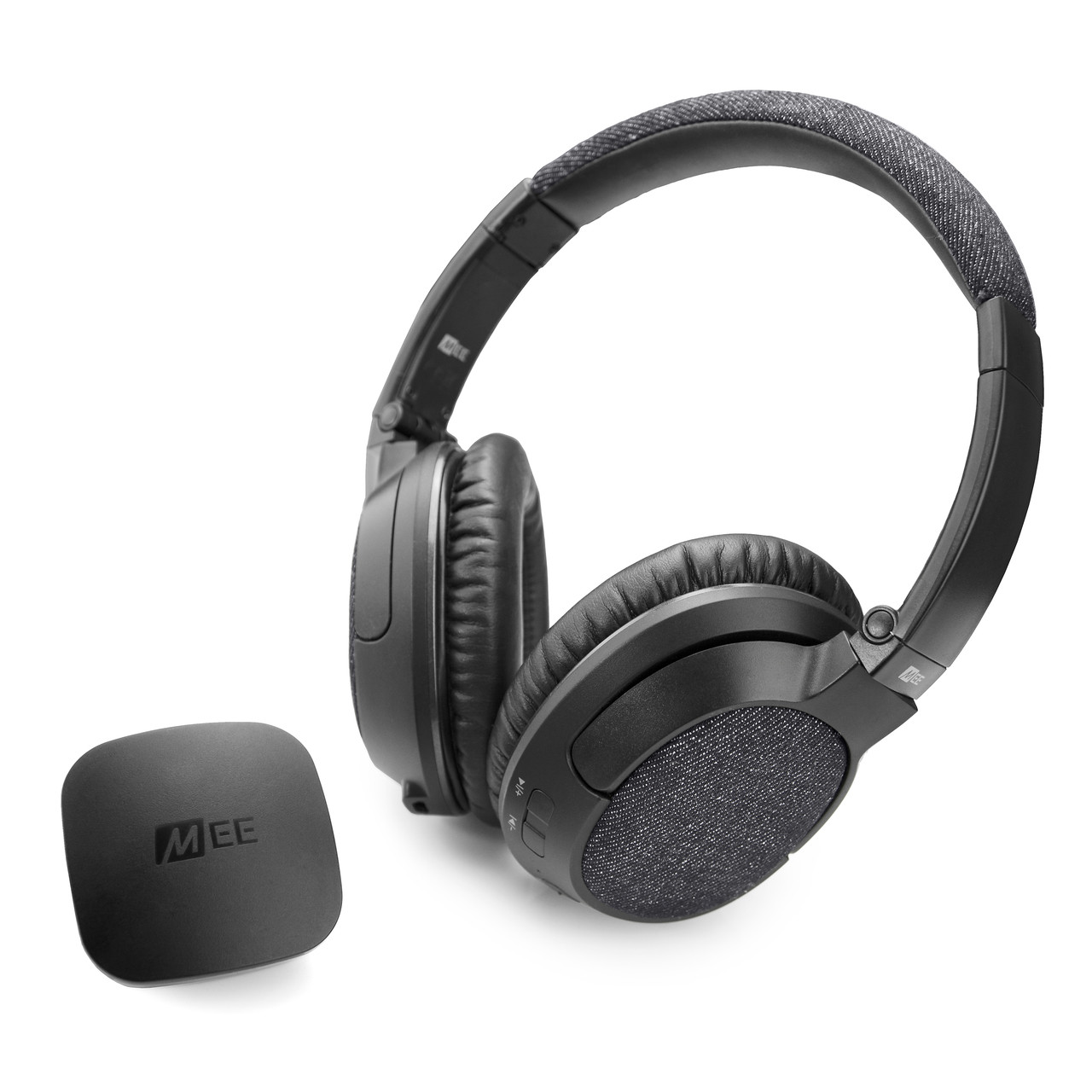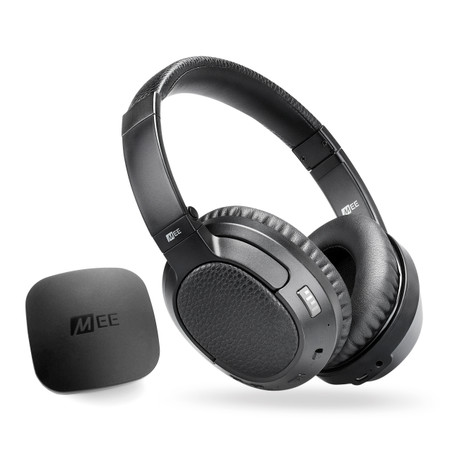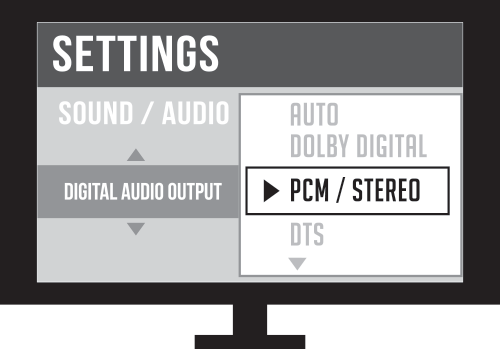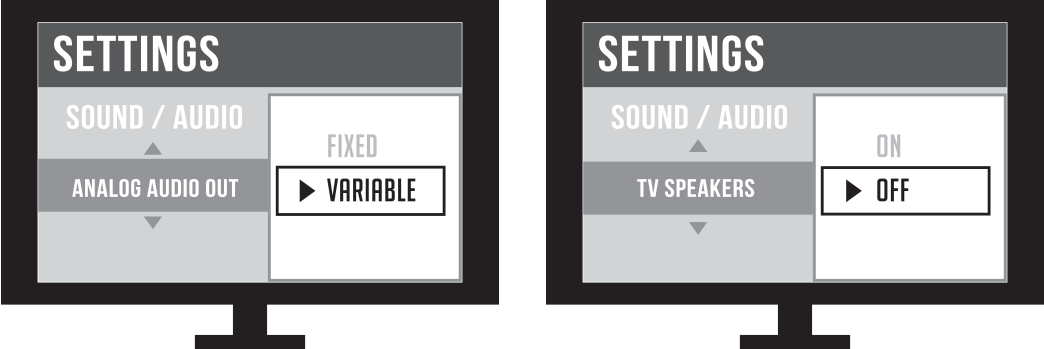- Home
- Support
- Connect Support
- Connect Video Support Guides
Connect Video Support Guides
Below you will find pairing and instructional videos to help you get the most out of your Connect.
Connect Setup Guides
Connect Product Manuals
For detailed information on troubleshooting, maintenance, and more; please refer to the online Connect user manual.
Choose your version below to view the manual in pdf format. To save it to your computer, right click the link and select "Save Link As...".
Additional Languages:
General Questions
| Question: | How many Bluetooth headphones or speakers can I connect to the MEE audio Connect at once? |
| Answer: | Two |
| Question: | Can I use truly wireless earphones with the MEE audio Connect? |
| Answer: | Yes, you can use Bluetooth-enabled truly wireless earbuds with this device. It is strongly recommended to use a pair of headphones/earphones that have dedicated volume up/down buttons for easier volume control while watching TV. |
| Question: | How do I adjust the volume on my AirPods when using them with a Bluetooth transmitter such as the MEE audio Connect? |
| Answer: | We strongly recommend using a pair of earphones or headphones that has a built-in volume control. That said, if AirPods are your only option, you can adjust the volume by connecting them to your iPhone or iPad, increasing or decreasing the volume, and then pairing them back to the Connect transmitter. |
| Question: | Will the MEE audio Connect work with my Bluetooth speaker? |
| Answer: | Yes, Bluetooth speakers are compatible. You just need to know how to put the speaker into Bluetooth pairing mode. |
| Question: | Can I use the MEE audio Connect to create a stereo/surround setup with 2 Bluetooth speakers, such that I get the left channel audio in the first Bluetooth speaker and the right channel audio in the second Bluetooth speaker? |
| Answer: | You can connect 2 Bluetooth speakers, but both speakers will receive both left and right channel audio (i.e. both connections will be stereo). You cannot separate the channels unless your speakers have a function to only output the left or right channel. |
| Question: | Does using the MEE audio Connect create a lag (delay) in the audio? |
| Answer: | Bluetooth is a digital wireless signal and there is some latency expected due to the coding/decoding steps that must occur, but the Connect is designed to minimize audio lag. In addition to regular Bluetooth audio, the Connect also supports both the aptX and aptX Low Latency audio codecs, which are notable for having lower latency (smaller audio delay) compared to regular Bluetooth audio. Using the Connect with a headphone that supports aptX will reduce audio lag, and using it with a headphone that supports aptX Low Latency (highly recommended) will lower the lag to where it is not noticeable. The MEE audio Matrix Cinema headphones provide the best low latency audio experience with MEE audio transmitters. You can also find a list of other aptX Low Latency-capable headphones here. |
| Question: | Can I use the Connect as a Bluetooth receiver to stream music wirelessly from my phone to a speaker or other non-Bluetooth audio device? |
| Answer: | No, the Connect only works as a Bluetooth transmitter. Transmitters connect to the audio source (such as a TV or computer) using a wire and stream the audio wirelessly to Bluetooth headphones or speakers. In order to stream your music from your phone to a non-Bluetooth speaker, soundbar, or other audio device, a Bluetooth Receiver such as the Connect Hub model is needed. |
| Question: | What is the difference between the MEE audio Connect and Connect Air Bluetooth transmitters? |
| Answer: | The Connect Air is designed mostly for on-the-go use. For TVs we recommend the regular Connect transmitter or the Connect Hub model, for three reasons:
|
| Question: | Do I need WiFi to use the MEE audio Connect? |
| Answer: | No |
| Question: | Do I need to plug the MEE audio Connect into a power source? |
| Answer: | Yes. Although the Connect includes a built-in battery, it still needs to be plugged in to charge. We recommend keeping the Connect plugged in to a power source at all times. Note: Many TVs’ USB ports only provide power when the TV is on, so your Connect may discharge even if plugged into a powered off TV. |
| Question: | Will the MEE audio Connect work with all TVs? |
| Answer: | The Connect works with TVs that have at least one supported audio out connection: digital audio out (optical TOSLINK), RCA audio out, or headphone jack. Note: Some TVs only have a Digital Audio Out coaxial connection, which will require a separate coaxial to optical adapter to work with the Connect transmitter. |
| Question: | Can I connect the MEE audio Connect to my TV using a digital audio out optical connection? |
| Answer: | Yes, the Connect will work using the optical jack. If you do not hear audio immediately plugging the optical cable from your TV into the optical input of this device, you will need to open your TV’s audio menu, locate the setting for optical audio output format, and change to "PCM" or "stereo". If your audio output is set to “Dolby”, “Surround Sound”, or similar, it will not work. |
| Question: | Which audio connection is the best to use with the MEE audio Connect? |
| Answer: | The Optical connection is generally recommended for best audio performance, if available. If your TV does not have an Optical connection, RCA and headphone jack connections will still provide good audio performance. |
| Question: | Will the MEE audio Connect work for Netflix / Apple TV / other streaming app? |
| Answer: | Yes, you can use streaming apps. Compatibility depends on the TV itself rather than the app. Note: If you are using the optical connection method from your TV and need to change audio settings in order to get the Connect to work (most commonly setting the "optical audio output format" setting to "PCM" or "stereo" for the optical connection), you will need to do so WHILE Netflix (or other video app) is open and playing video. You may have to repeat this for each streaming app if you plan to use several. |
| Question: | Can I adjust the volume of my Bluetooth headphones/speakers using my TV remote? |
| Answer: | Sometimes, depending on the type of audio output your TV has: 3.5mm headphone jack: If using your TV's headphone jack, you will be able to adjust the volume using your TV's remote. Optical: If you are using your TV's digital optical audio output (also known as a TOSLINK or Optical S/PDIF connection), then the volume will be fixed and cannot be controlled via the remote. Use the volume controls on your Bluetooth headphones or speakers to adjust the volume. RCA: If you are using the red/white RCA "audio out" connectors, then it varies depending on TV make/model. Some TVs will have a setting in the audio menu that will allow you to change between "fixed" and "variable" audio output, with the variable setting allowing the TV remote to adjust the volume. |
| Question: | Can others still hear my TV / Can I use my TV speakers while using the MEE audio Connect with Bluetooth headphones? |
| Answer: | Yes, depending on the type of audio output your TV has: Optical: If your TV has a digital optical audio output (also known as a TOSLINK or Optical S/PDIF connection), then yes, you will be able to use this device with Bluetooth headphones AND hear the TV's built-in speakers simultaneously, so others can still listen to the TV without headphones. RCA: If your TV has red/white RCA "audio out" connectors, then it varies depending on TV make/model. Some TVs will have a setting in the audio menu that will allow you to enable the TV speakers while also using the RCA audio output. 3.5mm headphone jack: If your TV only has a headphone jack, then your TV will likely mute the built-in speakers when you plug this device in, which means others won't be able to listen. |
| Question: | Can I still use my soundbar or home theater while using the MEE audio Connect? |
| Answer: | It depends on how your Home Theater is connected to the TV. If it is connected through the optical jack and your TV has no other audio connectors, you will need to either purchase an optical audio splitter so that you can connect both your audio system and this device to the same optical connector, or purchase the Connect Hub model, which has a built-in audio pass-through for soundbars. You will also need to set your TV's optical audio output to "PCM" or "stereo" – see the "ADDITIONAL TROUBLESHOOTING STEPS - If using an optical S/PDIF connection" section below for more details. |
| Question: | Can I use two MEE audio Connect transmitters on two different TVs and use the SAME headphones for either TV? |
| Answer: | Yes, but you will have to turn off the Connect transmitter that you are not using to ensure that your headphones reconnect to the desired Connect transmitter. If we call the two Connect transmitters "X" and "Y", the sequence to set this up would be as follows:
|
| Question: | Can I connect more than two headphones to my TV using the MEE audio Connect? |
| Answer: | You can pair up to two headphones with a single MEE audio Connect. You can use a splitter to send audio to two MEE audio Connect transmitters at the same time, in order to pair up to 4 headphones. |
| Question: | Will the MEE audio Connect work with Bluetooth-enabled hearing aids? |
| Answer: | This depends on the hearing aids - it will work with hearing aids that support a standard Bluetooth stereo audio connection (known as the A2DP Bluetooth profile) and are designed to be paired with regular Bluetooth audio sources without the use of an app or an additional Bluetooth accessory. There are some hearing aids that require specialized software, such as "made for iPhone" (MFI) technology. Even though they support Bluetooth, these hearing aids are not compatible with the Connect because they cannot be paired to screen-less Bluetooth devices. Only hearing aids that support A2DP and have an independent Bluetooth pairing mode (like a headphone does) will be able to be connected. There is a lot of variation between different brands of hearing aids and even different models from the same brand, so we always recommend contacting the manufacturer of your hearing aids with the exact model number of the hearing aids you are using and asking the following two questions:
|
| Question: | I have one-sided hearing loss - would this work for streaming audio to one hearing aid and one earbud? |
| Answer: | We would not recommend doing it this way. First, there is likely to be a difference in the audio timing between your hearing aid and a regular earbud, which means the audio in your left and right ears will not be in sync. This will be extremely annoying/distracting. Second, not all hearing aids are compatible with Bluetooth devices. The ability to pair the hearing aid to standard Bluetooth devices such as this transmitter depends on the specific way in which the hearing aid connects to Bluetooth. If possible, we would instead recommend using a headphone that can be worn over your hearing aid, or a Bluetooth speaker placed near you. This will both simplify the process of connecting to your TV and also ensure you are not getting audio that is out of sync between your left and right ears. |
| Question: | Does the MEE audio Connect work with the Google Home smart speaker? |
| Answer: | Google Home must be set up and updated to the latest software in order to work as a Bluetooth speaker. Put the Google Home in pairing mode by saying “Ok Google, pairing mode”. You can also do this by navigating to Menu -> Devices -> (Google Home device) -> Settings -> Paired Bluetooth Devices -> Enable Pairing Mode in the Google Home app. Once the Google Home is in pairing mode, tap the A or B button on the Connect to pair. Note: the Google Home does not reconnect automatically to paired Bluetooth devices, so this process would have to be repeated whenever it is disconnected from the Connect or the Connect is powered off. |
| Question: | Will the MEE audio Connect work with the Apple HomePod? |
| Answer: | Unfortunately the HomePod uses Wi-Fi (AirPlay) and not Bluetooth for audio streaming. The Connect only supports Bluetooth. |
| Question: | Can I use this Bluetooth transmitter with Bluetooth-enabled in-ear monitors for live sound? |
| Answer: | This product will work with Bluetooth-enabled in-ear monitors, but there will be a latency of between ~40 and ~400 milliseconds, depending on which Bluetooth audio codec your in-ear monitors support. If they support the aptX Low Latency codec, there will be a latency of around 40ms. If they support regular aptX, it's around 150ms. And if they don't support either aptX or aptX Low Latency, then the latency can get as high as 300-400ms. Even on the lower end of that, this can be too much latency for professional use. For this reason, we normally do not recommend using Bluetooth in live applications. |
Troubleshooting
The majority of issues on the Connect can be resolved by a full reset. To perform a full reset, press and hold the button marked "A" located on the right side of the unit until the blue light stops flashing, which takes approximately 6 seconds. Previously paired devices will be cleared from memory and you will have to re-pair any devices you wish to use with the Connect.
For answers to other frequently asked questions, please see below:
| Issue: | How can I adjust the volume of my AirPods? |
| Resolution: | Before connecting your AirPods to your Connect transmitter, connect them to your iPhone or iPad and raise the volume of the AirPods using the Control Center. After you’ve made the adjustment, disconnect your AirPods from your iPhone or iPad and pair them with the Connect. Note: if you are using your TV’s headphone jack as the connection method for your Connect transmitter, the TV remote can be used for further volume adjustment. |
| Issue: | MEE audio Connect will not power on; Green power light doesn't turn on or turns on and then off |
| Resolution: | Make sure the Connect transmitter is plugged into a powered USB port or the internal battery has been charged. The green power indicator light on the rear of the unit will light up when the unit is powered on. |
| Issue: | MEE audio Connect is not charging |
| Resolution: | If using a wall charger, make sure it is plugged in to a powered outlet. If using a computer or TV, make sure the computer or TV is powered on and the USB port has power. A pulsing green light on the rear of the unit indicates that the Connect is charging. |
| Issue: | I cannot put my MEE audio Connect into pairing mode |
| Resolution: | Make sure the Connect is charged or plugged into a powered USB power and the power switch is in the “on” position. When entering pairing mode, quickly tap the corresponding pairing button "A" or "B". Do not press and hold these buttons. |
| Issue: | I cannot pair my Bluetooth headphones with the MEE audio Connect |
| Resolution: | Make sure the device you are trying to pair with the Connect supports Bluetooth, can act as a Bluetooth receiver (e.g. it is a Bluetooth headphone, speaker, soundbar, or similar), and supports the A2DP (stereo audio) Bluetooth profile. Put the Bluetooth device you are pairing with the Connect into pairing mode. If you don’t know how to do this, consult the user manual of the device. Once the device is in pairing mode, tap one of the buttons on the side of the Connect to put the Connect into pairing mode. Tap button “A” when pairing one headphone with the Connect and “B” when pairing a second headphone. Make sure the headphones and Connect are in pairing mode at the same time and with 1 meter (3 feet) of each other. Interference may occur with some TVs during the pairing process. If the blinking blue light shuts off before it can pair, turn off all Bluetooth-capable devices (phones, TVs, set-top boxes, and other previously paired devices) and then try the pairing process again. If you are still unable to pair, turn the Connect off, wait 5 seconds, and turn it back on. Perform a full reset of the Connect and start the pairing process over again. Once the pairing process completes, a solid light on the top of the Connect will indicate that one headphone is connected. Two solid lights indicate that two are connected. |
| Issue: | The USB cable is plugged into the MEE audio Connect but no audio is heard |
| Resolution: | The Connect uses the USB cable only for power. Connect it to your device via the included optical or analog audio cables to stream audio. |
| Issue: | Headphones are connected to my MEE audio Connect (blue light solid is on) but no audio is heard |
| Resolution: | Ensure that there is an audio cable connected to only ONE of the audio inputs on the Connect - either the analog (3.5mm) input or the digital (TOSLINK) input. Plugging in only the USB charging cable is not enough. Ensure that the audio cable is firmly seated in the Connect transmitter, and that the other end of the audio cable is firmly seated in the audio output jack of the TV. Ensure that audio is playing on the TV/device and try raising the volume on your Bluetooth headphones. If audio is not heard, try the troubleshooting steps below specific to the connection method you selected for your TV. Additional troubleshooting steps for each connection method: |
|
If using an optical S/PDIF connection |
|
|
If using an RCA connection |
|
|
If using a headphone jack (3.5mm) connection |
|
| Issue: | I can hear TV audio, but I cannot hear audio from my Roku or other external streaming device: |
| Resolution: |
If you are using the optical audio output on your TV:
|
| Issue: | There is a delay (latency) in audio when using my MEE audio Connect |
| Resolution: |
Bluetooth is a digital wireless signal and there is some latency expected due to the coding/decoding and compression/decompression steps that must occur. In addition to regular Bluetooth audio (SBC), the Connect also supports the aptX and aptX Low Latency audio codecs, which are notable for having lower latency (smaller audio delay) compared to regular Bluetooth audio. Using the Connect with a headphone that supports aptX or aptX Low Latency will minimize audio lag. 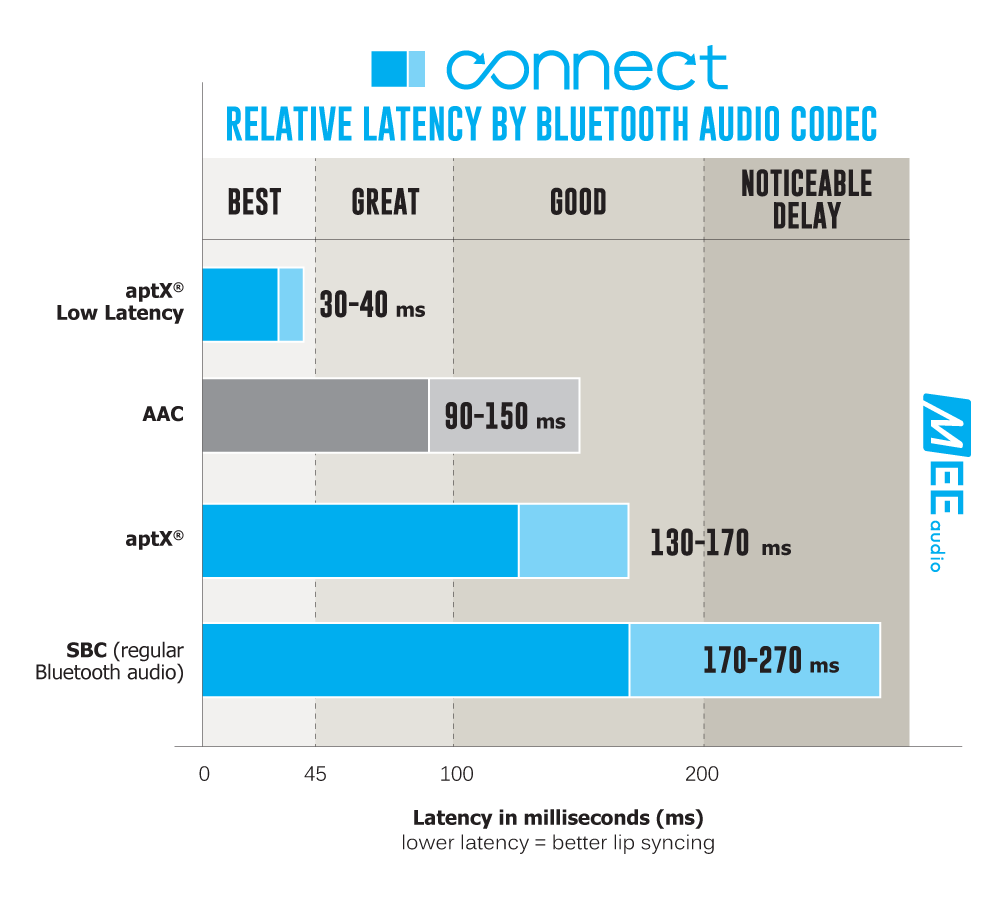 |
| Issue: | Previously paired headphones will not reconnect |
| Resolution: | To reconnect a previously paired headphone, first power on the Connect (if it was powered off previously) and then turn on the headphone. Once a solid blue light appears on the Connect, the connection has been re-established. Note: There is no need to turn off the Connect after each use if it is always plugged in to USB power. If the headphones do not reconnect automatically, make sure that they are not connected to another Bluetooth device such as your phone. Make sure that the Connect has not been reset since the headphones were last paired and does not already have two other headphones or Bluetooth devices connected to it (at most one solid blue light should be on). If you are still unable to pair, turn the Connect off, wait 5 seconds, and turn it back on. Perform a full reset and create a new pairing with your headphones. Note: The Connect can remember up to 8 Bluetooth devices. A 9th device will pair, but will not have the ability to reconnect. To correct this, perform a full reset and repeat the pairing process for the device you wish to pair. |
| Issue: | Audio was previously working via the Optical connection, but no longer works |
| Resolution: | If you have not changed any settings on your TV or unplugged any cables, the two most likely explanations are that the Bluetooth connection was lost, or that the TV settings were reset to defaults either (due to a temporary power outage or some other reason). You can check the Bluetooth connection by making sure that a solid blue light appears on the top of your Connect transmitter when your headphones are powered on. If a solid blue light does not appear, you will need to pair your headphones with the transmitter again. If a blue light does appear on the Connect when you turn on your headphones, and the optical cable is still plugged in firmly, then please make sure that the audio output format setting for the optical audio output on your TV is set to "STEREO" or "PCM” – see the “ADDITIONAL TROUBLESHOOTING STEPS - If using an optical S/PDIF connection” section above for more details. |
| Issue: | Low volume |
| Resolution: | Adjust the volume both on your Bluetooth headphones and on the TV or other connected device as both may control the volume. On some TVs the volume is fixed for each output. Try a different connection method. If your Connect is plugged into the TV’s the 3.5mm (headphone) jack and TV volume cannot be adjusted while the headphone jack has something connected to it, unplug the Connect from the headphone jack and adjust the volume, then plug the Connect back in. |
| Issue: | No sound from TV speakers once the MEE audio Connect is plugged in |
| Resolution: | Most TVs will mute the internal speakers automatically when a device is connected using the TV’s 3.5mm / headphone jack. In this mode, the volume level of the Connect can then be controlled via the TV remote. A few TVs have a setting to enable or disable the internal speakers when the headphone jack is in use -- consult the user manual of your TV for more information. Use the optical S/PDIF (digital audio out) if you need to use the TV speakers and Connect simultaneously. The RCA connection can also be used except in some TVs that require the internal speakers to be turned off via the settings menu in order to enable RCA audio output. In both optical S/PDIF and RCA modes, the volume level of the Connect is fixed and cannot be controlled via the TV remote. If using the optical S/PDIF (digital audio out) and you are hearing sound through the headphones but not through the TV speakers, change the sound output in the TV menu settings to "optical + tv speakers" or "tv speakers" |
| Issue: | Crackling noise, static, interference |
| Resolution: | Make sure you are within range of the Connect – the range is approximately 10m (33ft) in open space, and is reduced by the presence of solid options in the signal path, and by interference from other wireless devices. Bluetooth devices are susceptible to interference from other Bluetooth devices, microwave ovens, power stations and transmission lines, Direct Satellite Service (DSS), and wireless devices operating on the 2.4 GHz band. Eliminate as many potential sources of interference as possible while using your Bluetooth headphones. For the most noise-free audio, maximize the volume on your TV or other device and adjust volume via the headphones. |
| Issue: | I cannot connect to my phone, tablet, or other device to the MEE audio Connect via Bluetooth |
| Resolution: | The Connect is a Bluetooth transmitter. It cannot be connected with another transmitter such as a phone or tablet. It can only be connected with a Bluetooth receiver such as a Bluetooth headphone, speaker, sound bar, etc. |
| If you are unable to follow any of the recommendations above or require additional assistance with your MEE audio Connect, please contact support@meeaudio.com | |

 Loading... Please wait...
Loading... Please wait...







